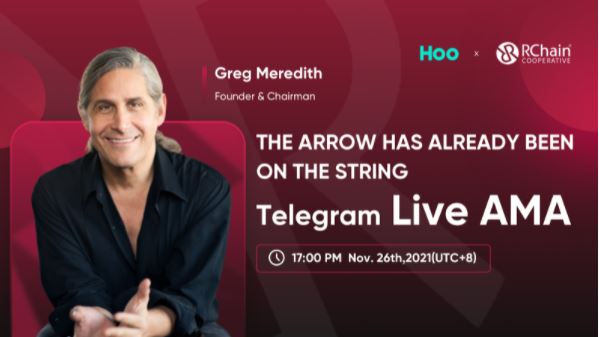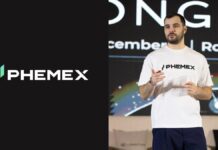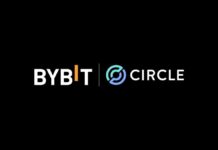
On November 27th, 2021, RChain‘s founder Greg Meredith and blockchain scientist Atticbee were invited as guests to an AMA hosted by the Hoo Exchange. Hoo is a Dubai based innovation driven crypto exchange and has their in-house developed public chain, HSC, built for the global cryptocurrency market. In this session, Greg Meredith and Atticbee shared the latest developments in RChain and remarkable ideas about the future of the blockchain and metaverse.
Q1. What kind of project is RChain?
Greg Meredith: RChain is a candle in the window: sanctuary is available. RChain focuses on blockchain as a coordination technology to provide a means for global coordination as conditions get more and more severe due to climate change. RChain focuses on building a scalable global computer and storage mechanism, rather than a payments system. Would you try to build a general purpose computer out of a cash register or a cash register out of a general purpose computer?
Q2. What is the value and significance of RChain’s existence to the blockchain?
Greg Meredith: There are three main points: This is the first blockchain that scales linearly. This means that as you add nodes/hardware it gets faster, not slower. Our current test data shows that we get roughly 1,000 tps per node per CPU. So a network of 10 nodes with 10 CPUs each gets 10,000 tps. 20 nodes with 20 CPUs each gets 20,000 tps, etc. Data can be realistically stored, updated, and searched on-chain.
Our smart contract language Rholang, is a concurrent transactional query language, reconciling the best of SQL and NoSQL (Not Only SQL). Meaning you can write sophisticated queries to search stored data. This distinguishes it from systems like IPFS. Smart contracts can be statically checked for concurrency and security errors. So, errors like what caused the DAO bug will be caught at compile time not in deployment. Imagine what would have happened to Ethereum if they had been running at 40K tps when the DAO bug was exploited.
Q3. The topic of metaverse is very hot now, does RChain have any plans in this area?
Greg Meredith: Another very interesting question! You know I worked directly with the pioneers of VR/AR. I was hired at the research lab where Kim Fairchild did SemNet, by Kim Fairchild himself. I was the one who suggested to Alan Wexelblat the title Software. So, I have a long time interest in this field.
However…Planet Earth is even hotter. In fact, in as little as a decade we are likely to see more than 1.5C temperature rise which will make the tropical zone uninhabitable, with wet bulb conditions — where the humidity and temperature are so high your sweat cannot cool you off — making it so that people will not even know that they are dying of heat exposure. Unfortunately, about 40% of the world’s population lives in the tropical zone. So, in as little as 10 years, 2.8B people are going to become climate migrants.
Meanwhile, the market has spoken. The largest hedge fund in the world, Black Rock, have listed oil as sell, and shifted their investments to green and climate related investments. Elon Musk is now the richest man on the planet and Tesla is growing by leaps and bounds. These are just two examples illustrating a major financial trend. If you want to be on the hot investments while working towards a safer planet, climate change is where you want to go. Those 2.8B people will not be able to move into the metaverse. It won’t be any cooler for the servers running the simulations.
Atticbee: We need to ask ourselves: what is the role of blockchain in the metaverse? If the role of blockchain to metaverse is only to trade game props, virtual real estates etc as NFTs, then the current projects may be good enough, at least if the transaction volume is low. However if Metaverse tries to simulate the real world, and uses blockchain as the trustable computing layer, then I would say RChain’s computing model is much closer to how the real universe works than the state machine used by virtually all other projects. As Greg Meredith said before, evolution had already picked out the best concurrent computing model, and the sequential Turing machine used by all other blockchain projects is never the chosen one.
Also I believe underlying blockchain tech and the upper layer Metaverse will mutually stimulate and evolve. Just like in history – when we only had steam engines, we could only build trains and ships. After we created the combustion engine, we could do cars, airplanes etc. Every tech breakthrough will open new doors for tomorrow’s world. With RChain’s concurrent computing, seamless sharding and on-chain storage, Metaverse will be reshaped by RChain’s breakthrough technology.
Greg Meredith: I hope we have time to see the co-evolution of blockchain and metaverse.
Q4. How is RChain planning the ecosystem?
Greg Meredith: I love this question! Our central focus is transaction volume. We are looking to applications, such as self-sovereign data, online advertising and sponsorship, and social networks that generate large transaction volumes. The economic argument is simple. Currently, proof-of-work miners are making millions per day. What would make them want to switch proof of stake validators? If you lower transaction costs, you are just going to cut into their profits. If you cut transaction costs by a factor of 100, but raise transaction volume by a factor of 1,000, then they stand to make 10X, and at a fraction of their power consumption. Now, you have a real argument for them to move to proof-of-stake.
Once you understand that transaction volume is where the action is, then you just have to look at the Internet. How many times do you click to pay versus how many times do you click to “Play”? That is, how many times do you post on Instagram or Twitter or WeChat, versus how many times do you click to pay a bill or a vendor? How many times do you click to stream something on YouTube or Spotify versus how many times do you click to pay someone with PayPal or Venmo or WeChat? It’s hundreds (if not thousands) to one. All the transaction volume is in click to “Play”.
And wherever you play, there are ads. In fact, online advertising is the largest economy in the world. It’s bigger than oil. So, we want to help people make lots and lots of decentralized clicks to play DApps: social networks, streaming services, logistics services, data services, etc. And we want to stream sponsored content through those decentralized services, but do so in a way that we eliminate surveillance capitalism. We want people to have a say as to whether their data is sold and if it is sold, get a cut of the profits.
Q5. Will RChain support one-click migration from other public chains’ ecosystems to RChain?
Greg Meredith: Very relevant question. As much as is possible. Our sharding solution allows other chains to be mounted as shards. This means that smart contracts can be written as if other chains were just RChain resources. In this case, for the RChain side, there is 0-click migration.
The biggest stumbling block to migration is the mismatch in the computational model. RChain operates concurrently while most other blockchains operate sequentially. This means they cannot handle RChain’s execution demands. RChain execution requests to other chains will queue up and queue up as they process them one at a time.
Of course, going the other way is simple, but it means that RChain has to slow down to match the sequential semantics of the other chains.
Q6. What is the current stage of RChain’s development progress?
Greg Meredith: RChain has been in mainnet for just under 2 years. Last year we released a major feature, the last finalized state, that means that new validators can synchronize to the chain without having to go all the way back to the genesis block. This year we are releasing a major performance improvement, called block merge, that gives the linear scaling.
It’s very exciting, really. It’s the culmination of a dream I began over 30 years ago. RChain is actually 4th generation technology for me. The second generation I did at Microsoft was BizTalk Process Orchestration. That was 20 years ago. Now RChain realizes the full potential of architecture and mathematics.
Q7. It is said that RChain is building a global computer, how will it be realized?
Greg Meredith: Each node is a copy of the computer, the consensus algorithm keeps all the nodes in sync. So, even if one node goes down, or is taken down, many can come to take its place. Then through sharding you have special purpose dedicated computing resources for vertical markets and services, such as streaming, or maps, or gaming, or …
Atticbee: I’ve established the following relationships btw “traditional computer” and the blockchain “global computer”:
- Traditional Computer : Blockchain computer.
- Multithreading : concurrency of block merge.
- Multiprocess : sharding (composability).
- Firewall : on-chain formal verification (behavior type system).
All these 3 parts are necessary if we want to build a truly useful global computer. And the core computational layer should be carefully chosen so that all 3 parts can be supported, it means the chosen computational model should support concurrency, composability and a behavior type system. Unfortunately that leaves us very few choices.
From the above table, only Pi-Calculus or Rho-Calculus can provide all the required features. Rho-Calculus is the upgraded version of Pi-Calculus. With reflection, it has much more expressive power so that it is the first process of calculus that is suitable to be used as smart contract language. And we are fortunate to have Greg Meredith as the founder of Rho-Calculus. With the coming “block merge” milestone we’ll show the multi-threading/concurrency capability in a single shard.
After that we’ll have sharding, the only “seamless” sharding solution that makes many shards “look and feel” like one. After that we’ll reach the Venus milestone in the roadmap – we’ll have a behavior type system to allow thousands of contracts to safely cooperate with each other. Above that we can easily add a smart contract orchestration layer like Kubernates. As you can see, without a carefully chosen computational model, you can not go too far and you will always be locked in as a payment solution, rather than a global computer that can handle a global scale, all-in-one computing infrastructure to serve Web 3.0.
[newsletter_form lists="1"]










